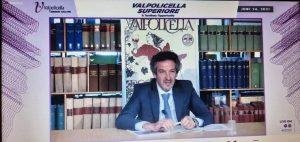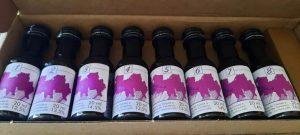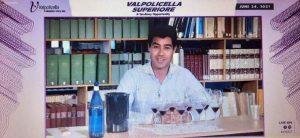
На сайте используются cookie файлы
The site uses cookie files
Данный сайт имеет возрастное ограничение!
This site has age restrictions!
Я подтверждаю, что мне, увы, уже давно исполнилось 18 лет
The Consorzio per la Tutela dei Vini Valpolicella, an association of grapevine growers, winemakers and bottlers of Valpolicella wine production area, hosted the second online seminar Valpolicella Superiore – A Territory Opportunity.
800 participants from 25 countries, including Drinks+, took part in the online seminar Valpolicella Superiore – A Territory Opportunity, organized by the Consorzio Tutela Vini Valpolicella.

In the first part of the seminar, Consorzio Valpolicella President Christian Marchesini, and Il Corriere Vinicolo journalist Giulio Somma discussed the key figures of the annual report which includes detailed production data, historical information, climate characteristics and market trends. The annual report was prepared for the first time by the Consorzio.

So, currently 2271 producers, 322 bottlers are working on the production of Valpolicella wines. 70% of the wine produced is exported to 87 countries around the world. The vineyard area is 8398 hectares, the annual turnover is more than 600 million euros. Almost 65 million bottles of Valpolicella and Ripasso DOC, as well as Amarone and Recioto were produced last year.
For small wineries, the percentage of wines produced is the following: Valpolicella Ripasso (44.6%), Valpolicella (30.7%), Amarone / Recioto (24.7%); for large wineries, Ripasso reaches 57.8%, Amarone / Recioto – 24.7%, and Valpolicella – 17.6%.

During a discussion between Consorzio President Christian Marchesini and journalist Giulio Somma, the region’s strengths were identified. They include:

In the second part of the online workshop, wine journalist Filippo Bartolotta raised the question whether Valpolicella Superiore could be the wine of the territory, not the wine of the method.
Gabriele Gorelli, Italy’s first MW, took samples and investigated the future of Valpolicella Superiore using the wine profile as an example. The online event was moderated by wine marketing consultant, trainer, wine journalist JC Viens.

Experts noted that over time, it became necessary to clearly separate the oenological concept of the production of Valpolicella Ripasso and Valpolicella Superiore which compete on the international market and sometimes have similar organoleptic characteristics. The consortium conducted research among producers which made it possible to clarify the differences between these types of wines and find a certain scheme that will be introduced in the following years. In addition, wine experts agreed that Valpolicella Superiore wines should express the distinctiveness of the territory, without using the appassimento method.

The second part of the online seminar also included tasting of 8 samples of Valpolicella Superiore, which were sent in advance by the Consorzio. The samples only indicated the alcohol level. According to Gabriele Gorelli‘s comments – and one cannot but agree with them – most of the samples retain the aromatic characteristics typical of Corvina, Corvinone, Molinara, Rondinella, such as currant, white pepper, strawberry, and have a velvety structure with light tertiary and spicy notes. Valpolicella Superiore wines clearly have a recognizable identity, Gorelli said, and online conference moderator JC Viens noted that significant economic support is needed for small producers to promote and define Valpolicella Superiore’s identity. And, according to representatives of the Consorzio, the producers are ready to begin their work that can strengthen these wines in the region as a whole.

We would like to thank Consorzio Tutela Vini Valpolicella for the opportunity to taste Valpolicella Superiore wines and take part in the online conference.